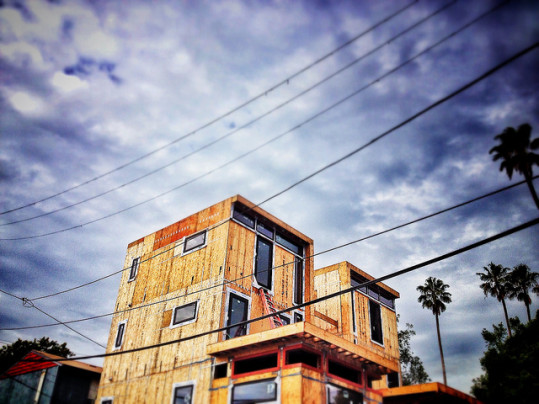Housing market conditions fluctuate. Home prices, mortgage rates, and inventory all rise and fall. For most home buyers, however, market conditions aren’t what motivates them to make a move. More often than not, buyers are shopping for a house because they’ve started a family, changed a job, retired, or just need more space. In other words, buyer demand sometimes doesn’t coincide with market fluctuations. Take the most recent Applications Survey from the Mortgage Bankers Association. The survey which tracks mortgage rates and demand for loans has been conducted since 1990 and covers 75 percent of all retail residential mortgage applications. According to the most recent release, mortgage rates rose last week. But, despite the increase, home buying demand was also up, climbing 6 percent from the week before and 15 percent over last year at the same time. Joel Kan, MBA’s associate vice president of economic and industry forecasting, says market and economic volatility have yet to slow buyer demand. “The purchase index increased for the third straight week to its highest reading since July,” Kan said. “This is likely a sign that the underlying demand for buying a home remains strong, despite some of the recent volatility we have seen.” More here.
Archive for September 2019
Confidence In Housing Hits A High
If you want to know how the housing market’s doing, ask a builder. After all, it’s their business to sell homes. So they have to have a good feel for whether or not people are interested and ready to buy. That’s why the National Association of Home Builders conducts a monthly survey that asks builders for their view of the market, current buyer traffic, and expectations for the next six months. Their Housing Market Index is considered a good barometer of housing health and, in particular, interest in the market for newly built homes. In September, it rose to its highest level since last October. In short, builders are feeling confident in the market. “Low interest rates and solid demand continue to fuel builders’ sentiments even as they continue to grapple with ongoing supply-side challenges that hinder housing affordability, including a shortage of lots and labor,” Greg Ugalde, NAHB’s chairman said. In other words, despite affordability concerns, builders are optimistic that Americans are ready to buy. In fact, the index component measuring current sales conditions was up two points to 75 on a scale where any number above 50 indicates more builders view conditions as good than poor. More here.
Credit Standards Tighten As Outlook Brightens
Credit standards refer to how easy or difficult it is for a borrower to be approved for a loan. When credit standards loosen, it means borrowers with a less optimal financial situation have a better shot at securing financing. When they tighten, the opposite is true. Because standards fluctuate, there are a number of reports that track where they’re headed. Among the most recent, Fannie Mae’s Q3 2019 Mortgage Lender Sentiment Survey takes a look at what senior executives at lending institutions across the country have to say. According to the results, standards have been tightening recently. Despite the tightening, however, demand for loans is up. Doug Duncan, Fannie Mae’s senior vice president and chief economist says tightening standards have not outweighed the effect of lower interest rates. “Lender profitability sentiment hit a survey high this quarter, despite the movement of credit standards from net easing to net tightening,” Duncan said. “Lenders attributed their upbeat profitability outlook to consumer demand and operational efficiency. Many lenders pointed to declining interest rates as the engine behind consumer demand, particularly for refinance mortgages.” More here.
How Much Do You Need For Your Down Payment?
You need to have some money if you want to buy a house. That’s no surprise. But knowing how much you need is another question. And it’s a question a lot of potential home buyers don’t know the answer to. In fact, a recent survey from Bankrate found that 51 percent of Americans said they didn’t know the required minimum down payment. Another 28 percent said a down payment of 20 percent was necessary to buy a house. In short, there are a lot of people who want to own their own home who may have misconceptions about what it takes to buy one. Deborah Kearns, mortgage analyst at BankRate, says buyers have options and knowing them can save them money. “Twenty percent of the purchase price has long been the recommended amount, however, many home buyers don’t realize that conventional loans require just 3 percent of the purchase price as a down payment and some VA and USDA loans don’t require anything at all,” Kearns said. “Local first-time home buyer assistance programs can also lower your upfront, out-of-pocket costs substantially at closing.” In other words, if you want to buy a house but think you can’t afford it, talk to your lender before talking yourself out of buying. More here.
Majority Of Buyers Find A Home Using Their Phone
These days, there aren’t many things you can’t do on your phone. From grocery shopping to getting a job, smartphones have made nearly everything easier to do. And, according to new research from the National Association of Realtors, that’s also true of looking for a house to buy. The data shows that the vast majority of home buyers used their phones to help search for a house. And it isn’t just young people who are turning to technology to help with their home search. In fact, large majorities of buyers across all generations said they started searching homes using their phones. Among Millennial respondents, a full 80 percent said they used their phone to look for a home, with GenX buyers almost equally as likely to use a phone at 78 percent. There was a slight drop off, however, among Baby Boomers, with 68 percent of buyers between the ages of 54 and 63 saying they began their search on a smartphone. From the numbers, it’s clear that the convenience and accessibility of smartphones has helped prospective buyers more easily find a home that suits their needs. They can also help buyers find an agent to work with. The survey found that nearly 20 percent of participants said that’s how they found the real-estate professionals that helped them seal the deal. More here.
Buyers Respond As Rates Continue To Fall
According to the Mortgage Bankers Association’s Weekly Applications Survey, average mortgage rates fell last week across all loan categories, including 30-year fixed-rate mortgages with both conforming and jumbo balances, loans backed by the Federal Housing Administration, and 15-year fixed-rate loans. The decline means rates remain near three-year lows. Joel Kan, MBA’s associate vice president of economic and industry forecasting, says falling rates led to a spike in demand for home purchase loans. “Purchase activity was 9 percent higher than last year, continuing the trend of solid year-over-year gains,” Kan said. Buyers may be responding to falling mortgage rates or trying to wrap up their home search before the summer season comes to a close. But, whatever their motivation, they definitely returned to the market last week. In fact, the MBA’s Purchase Index shows the number of Americans requesting applications for loans to buy homes was up 5 percent week-over-week. The MBA’s weekly survey has been conducted since 1990 and covers 75 percent of all retail residential mortgage applications. More here.
End Of Summer Slowdown Arrives Early
Much like the weather, the housing market’s hottest season is summer. Buyer activity begins to accelerate in the spring and typically reaches its peak right around the time the seasons turn. But then, after the kids go back to school, the air begins to cool and so does the market. Fall brings with it fewer buyers, slowing prices, and less competition for available homes. This is the normal seasonal cycle. But this year, newly released data shows the seasonal slowdown, that usually arrives in September, began earlier than usual. For example, according to a new release from the National Association of Realtors’ consumer website, home prices fell 1.8 percent between July and August. The timing and size of the decline is a good indication that the summer sales season is coming to an early close. But why? Well, one explanation is that – though slowing prices and low mortgage rates are good for affordability – economic uncertainty has potential buyers feeling cautious. Whether or not that feeling intensifies will determine, in part, what conditions fall home buyers encounter when shopping for a house to buy. More here.







